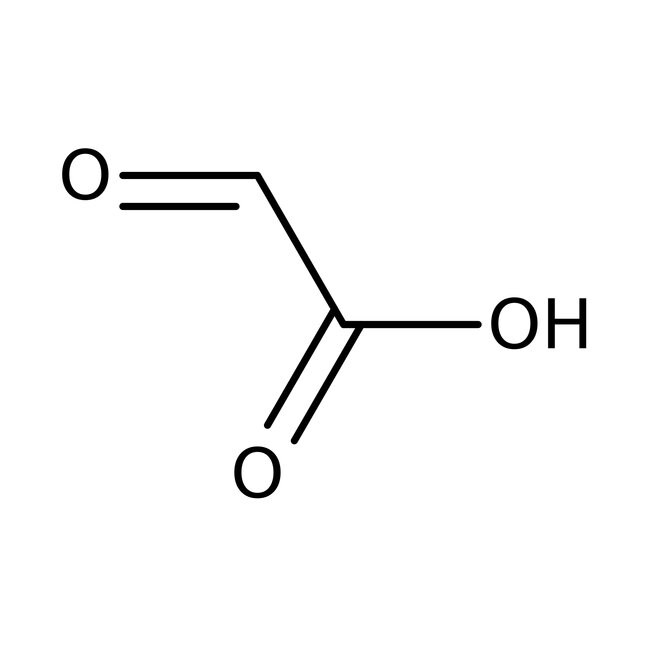Search Thermo Fisher Scientific
Glyoxylic acid, 50% w/w aq. soln., Thermo Scientific Chemicals



Glyoxylic acid, 50% w/w aq. soln., Thermo Scientific Chemicals
Chemical Identifiers
Specifications
Description
This Thermo Scientific Chemicals brand product was originally part of the Alfa Aesar product portfolio. Some documentation and label information may refer to the legacy brand. The original Alfa Aesar product / item code or SKU reference has not changed as a part of the brand transition to Thermo Scientific Chemicals.
Glyoxylic acid is used in Hopkins Cole reaction, which is used in the detection of tryptophan in proteins. It reacts with phenol to get 4-hydroxymandelic acid, which on further reaction with ammonia gives hydroxyphenylglycine, as a precursor to the drug amoxicillin. It is also used as a starting material for the preparation of 4-hydroxyphenylacetic acid, which is used to get atenolol. It is involved in the production of agrochemicals, aromas, cosmetic ingredient and pharmaceutical intermediate. It is also used in water purification and in the preservation of food. Further, it is employed as precursor in the synthesis of iron chelates. In addition to this, it serves as an intermediate of varnish material and dyes.
Solubility
Miscible with ethanol. Slightly miscible with ether and benzene. Immiscible with esters.
Notes
Incompatible with metals, alkalies, strong oxidizing agents and strong bases.
Figures
Documents & Downloads
Certificates
Frequently asked questions (FAQs)
Citations & References
Safety and Handling
Classification of the substance or mixture
CLP classification - Regulation(EC) No 1272/2008
Label Elements
Signal Word
Danger
Hazard Statements
H317 - May cause an allergic skin reaction
H318 - Causes serious eye damage
Physical Hazards
H290 - May be corrosive to metals
Precautionary Statements
P280 - Wear eye protection/ face protection
P301 + P330 + P331 - IF SWALLOWED: rinse mouth. Do NOT induce vomiting
P305 + P351 + P338 - IF IN EYES: Rinse cautiously with water for several minutes. Remove contact lenses, if present and easy to do. Continue rinsing
P310 - Immediately call a POISON CENTER or doctor/physician